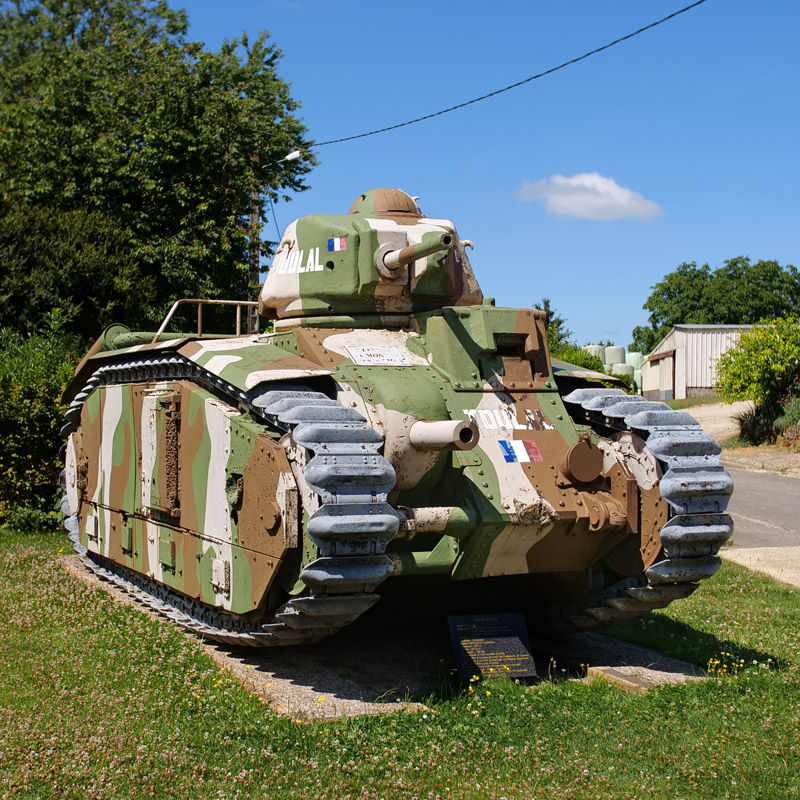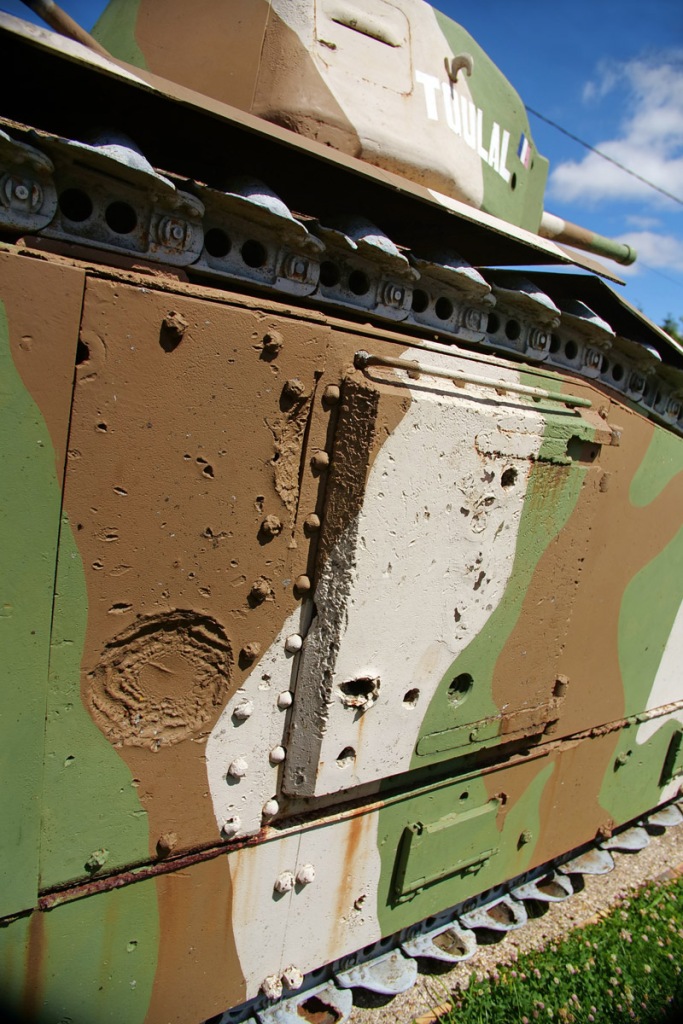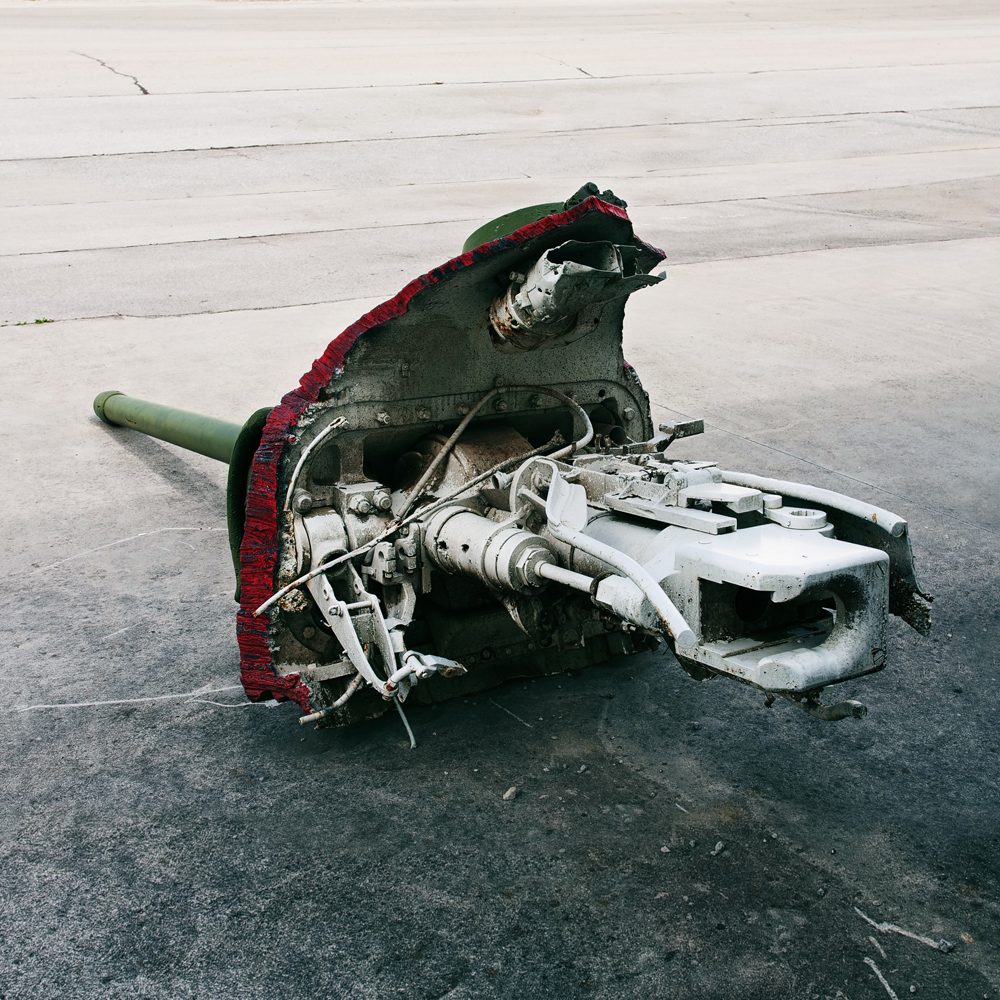Type: Heavy Tank
Nation: France
Period: World War 2
Location: Stonne, France

A slow-paced pet project
In 1921 General Jean Baptiste Eugène Estienne – the French “Father of the Tank” – had initiated the development of a new principal battle tank. The evaluation of several competing prototypes during the following decade eventually resulted in the 25-ton Renault Char B.
Almost banned
However, its production had to be temporarily put on hold due to the Geneva World Disarmament Conference from 1932 to 1934, where a ban on tanks over 20 tons was being discussed. In the end, the ban was not put into action and the French Army adopted the new vehicle as the Char B1 in 1934. Like both French heavy tanks of World War 1 (the Schneider CA and the Saint-Chamond), it was armed with a hull-mounted 75 mm gun. But the B1 also carried a 47 mm gun in a fully traversable turret – a feature previously seen on the groundbreaking Renault FT.

The more the better?
After a very small initial production run, the improved 32-ton “B1 bis” model was introduced. The armour was increased from 40 to 60 mm on the front and a new turret with a longer gun were installed. To cope with the extra weight, the B1 bis received a more powerful engine. Until June 1940 about 370 vehicles of this type would leave the factory. „Bis“ is Latin for „twice“, indicating the second model after the basic B1. There were plans for a Char B1 ter (ter = thrice), but only a few prototypes were ever produced.

Put to the test
By the time the Germans invaded in May 1940, the French heavy tanks were organised in three newly created reserve armoured divisions called DCRs (= Division Cuirassée de Réserve). After the start of the campaign a fourth division was activated which was commanded by Colonel Charles de Gaulle. All DCRs were ordered to stop the advancing Germans, but as they lacked proper training and were often deploying their tanks piecemeal (sometimes even one tank at a time), they could only achieve limited success.

War wounds
This particular vehicle belonged to the 49th Tank Battalion (3rd DCR) and took part in the defence of Stonne against the 10th Panzer Division from 15 to 24 May 1940. During the intense fighting the town changed hands 17 times until the Germans eventually overwhelmed the French. The battle damage is still visible all over the tank, for example on the crew access door on the right side of the hull.


3 responses to “Char B1 bis”
[…] T-34s – just like they had done a year earlier when they had faced the tough Matilda IIs and Char B1 bis in France. Of course, the high losses of early T-34s were not only caused by the tank‘s […]
LikeLike
[…] Since there was no time for experimenting, testing and refining, the M3 was to have as few new parts as possible. Instead, the designers had to make due with what they already got and what they knew would work. The automotive components such as the engine, drivetrain and suspension system were all inherited from the M2. The hull layout was borrowed from the pre-war T5E2 prototype, which had a 75 mm gun in a side-mounted sponson while retaining a traversable turret. Another influence with a similar design was the French Char B1 bis. […]
LikeLike
[…] Matilda II was one of the most heavily armoured tanks of its time, comparable only to the French Char B1 bis. Designed as an infantry tank, its role was to break through enemy lines – so being able to take […]
LikeLike